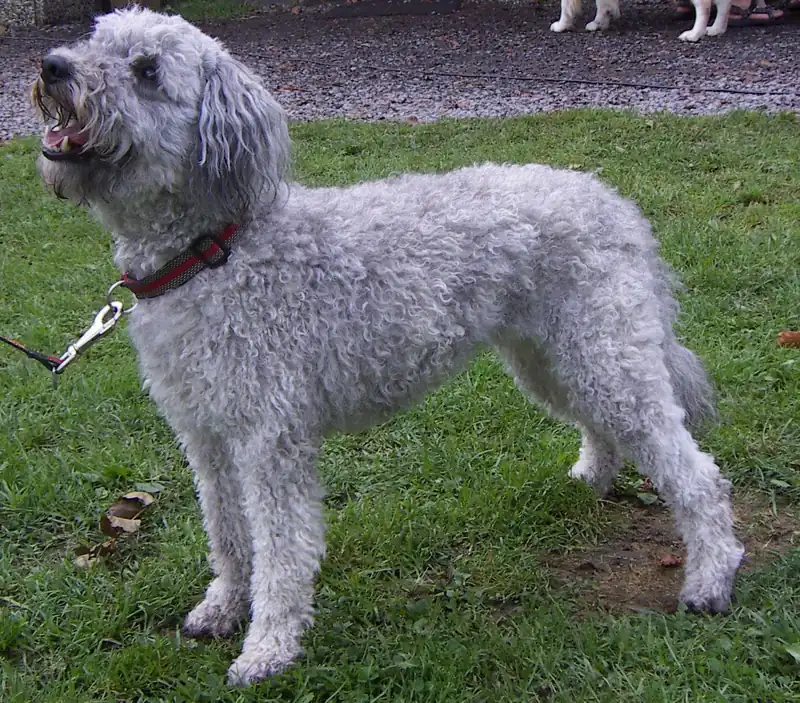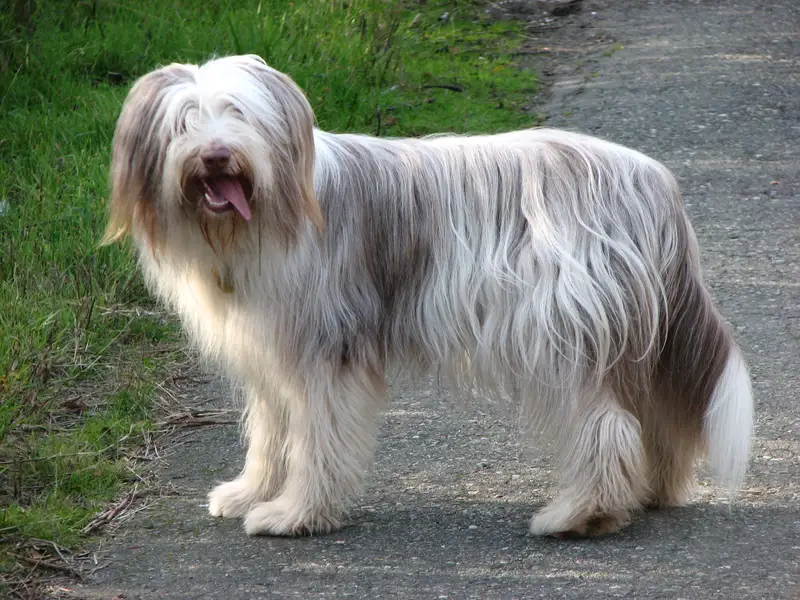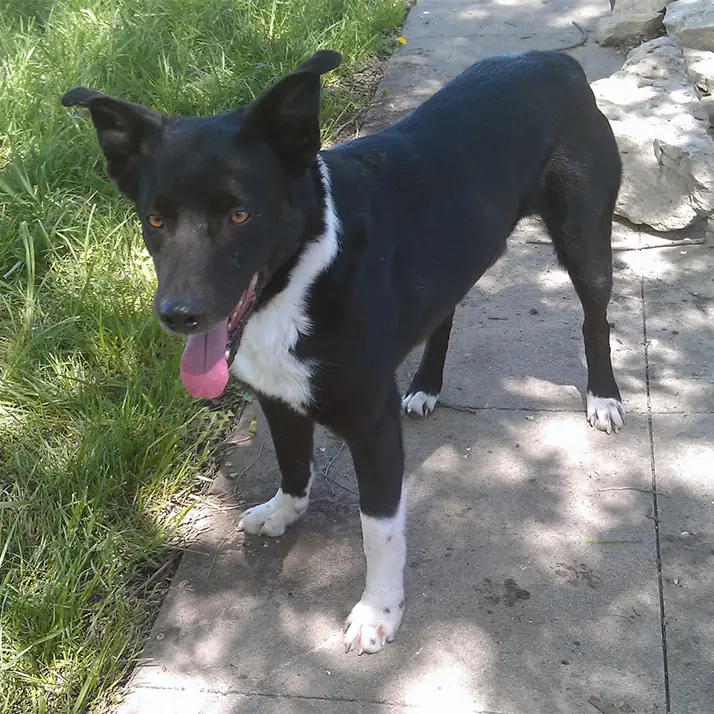Bohemian Shepherd
The Bohemian Shepherd, or Chodsky Pes, is a medium-sized, energetic breed known for its herding and guarding abilities. With a friendly temperament and intelligence, they make excellent family companions.
Overview
🐕Breed Overview
✨Key Traits
💡What Makes Bohemian Shepherd Special
The Bohemian Shepherd's loyalty and intelligence are standout traits that make them exceptional companions. They are known for their agility and ability to perform various tasks, from herding to guarding.
Their friendly demeanor and protective instincts make them suitable for families, as they bond closely with children and other pets. This breed's adaptability allows them to thrive in various environments, provided they receive adequate exercise and mental stimulation.
Their history as a working dog contributes to their strong work ethic and desire to engage in activities that challenge them physically and mentally.
The Bohemian Shepherd, also known as the Chodsky Pes, is a medium-sized breed originating from the Czech Republic, renowned for its herding and guarding abilities. With a height ranging from 19 to 22 inches and a weight of 30 to 55 pounds, this breed boasts a compact and well-proportioned body covered in long, thick fur, ideal for harsh weather conditions. Their erect ears and elegant neckline contribute to their striking appearance.
Historically, the Bohemian Shepherd has played a vital role in the agricultural practices of the Chod region, serving as a loyal companion and protector of livestock. This breed is characterized by its stable, calm, and friendly temperament, making it an excellent choice for families, especially those with children. They are known for their intelligence and eagerness to please, which makes training relatively straightforward.
However, they require regular exercise and mental stimulation to thrive, as they are an active breed with a strong work drive. The Bohemian Shepherd is also recognized for its agility and keen sense of smell, making it suitable for rescue work and as a watchdog. Their affectionate nature and compatibility with other pets further enhance their appeal as family companions.
With a lifespan of 12 to 15 years, the Bohemian Shepherd is a devoted and loving addition to any household, provided they receive the attention and activity they need to stay happy and healthy.
🎉Fun Facts
The Bohemian Shepherd is believed to be one of the ancestors of the German Shepherd.
They have a unique fluid gait that sets them apart from other breeds.
This breed is often used in rescue operations due to its keen sense of smell and agility.
Breed Characteristics
Family & Friends
Good Behavior
Get Up & Go
Household Harmony
Temperament & Personality
✨Key Traits
🐕Core Temperament
The Bohemian Shepherd is characterized by its friendly and calm demeanor. They are protective of their family and can be wary of strangers, making them excellent watchdogs.
Their intelligence and eagerness to learn make them responsive to training, and they thrive in environments where they can engage in physical and mental challenges. This breed is known for its playful nature, especially with children, and they typically get along well with other pets when properly socialized.
Their stable temperament allows them to adapt to different living situations, making them suitable companions for active families.
💫Personality Profile
The Bohemian Shepherd is known for its friendly and stable temperament. They are highly intelligent and eager to please, making them relatively easy to train.
This breed thrives on human interaction and enjoys being part of family activities. They are generally good with children and can be protective of their family, making them excellent watchdogs.
Their playful nature and energy levels make them great companions for active families, and they require regular exercise to stay happy and healthy. While they may be reserved with strangers, they are affectionate with their families and enjoy socializing with other pets.
🔊Vocal Tendencies
The Bohemian Shepherd has a moderate noise level. They may bark to alert their owners of strangers or unusual occurrences, but they are not excessive barkers.
Their vocalizations can vary from barks to howls, especially when they are excited or playing. Proper training and socialization can help manage their barking tendencies, ensuring they are well-behaved in various situations.
Affection & Social Traits
Energy & Activity
Communication Style
Care Requirements
🏃♂️Exercise Requirements
Daily Exercise
The Bohemian Shepherd is an active breed that requires a significant amount of exercise to maintain its physical and mental well-being. Ideally, they should engage in at least 60 to 90 minutes of exercise daily, which can be broken down into multiple sessions.
Activities such as brisk walks, running, playing fetch, and engaging in dog sports like agility or obedience training are excellent for this breed. Puppies may require shorter, more frequent play sessions to avoid overexertion, while senior dogs may benefit from gentler activities like leisurely walks or swimming.
Regular exercise not only helps manage their weight but also reduces the likelihood of behavioral issues stemming from boredom or pent-up energy. Insufficient exercise can lead to destructive behaviors, anxiety, and increased barking, making it crucial for owners to provide adequate physical activity.
Preferred Activities
🏠Living & Adaptability
Space Requirements
The Bohemian Shepherd is adaptable to various living situations but thrives best in homes with ample outdoor space. While they can live in apartments, it is essential to ensure they receive enough daily exercise and mental stimulation.
A house with a large yard is ideal, allowing them to run and play freely. Owners in smaller spaces should commit to regular outings to parks or open areas.
The breed's size and energy level mean they can become restless or destructive if confined for too long, so providing them with opportunities to explore and engage in activities is vital.
Climate Preference
🍲Feeding Guide
Schedule
Food Types
Portion Size
Special Nutritional Needs
The Bohemian Shepherd may benefit from a diet rich in protein to support their active lifestyle. It's important to choose high-quality dog food that meets their nutritional needs, including essential fatty acids for coat health and joint support.
Puppies should be fed a specially formulated puppy food to ensure proper growth and development. Owners should monitor for any food sensitivities and adjust their diet accordingly.
✨Grooming Requirements
Grooming Overview
The Bohemian Shepherd has a long, thick coat that requires regular grooming to keep it healthy and free from mats. Brushing should be done at least once a week, with more frequent grooming during shedding seasons to manage loose hair.
A slicker brush and a comb are recommended tools for maintaining their coat. Bathing should be done as needed, typically every few months or when the dog gets particularly dirty.
Regular nail trimming and ear cleaning are also essential to maintain overall hygiene and prevent health issues.
Care Schedule
Brush weekly, bathe as needed (every few months), trim nails every 2-4 weeks.
Health Profile
⚕️Health Care
Regular health care significantly impacts the Bohemian Shepherd's lifespan. Routine veterinary check-ups, vaccinations, and preventive treatments are essential for early detection and management of health issues. Owners should also maintain a consistent schedule for dental care, parasite prevention, and overall wellness checks to promote optimal health throughout the dog's life.
Health Issues Overview
⏳Average Lifespan
Genetic Factors
Genetics play a crucial role in the Bohemian Shepherd's lifespan, with hereditary health issues potentially affecting their longevity. Responsible breeding practices that prioritize genetic diversity can help reduce the risk of inherited conditions. Prospective owners should seek reputable breeders who conduct health screenings and provide information about the lineage of their puppies to ensure a healthy genetic background.
Living Conditions
The Bohemian Shepherd's lifespan can be influenced by various environmental factors, including housing conditions, climate, and social interactions. Providing a safe and stimulating environment, along with regular exercise, can promote longevity.
Dogs that live in homes with ample outdoor space tend to be more active, which contributes to their overall health. Additionally, social interactions with family members and other pets can enhance their emotional well-being, positively impacting their lifespan.
🏥Common Health Issues
Hip Dysplasia
Warning Signs
🔬Diagnosis
Veterinarians typically diagnose hip dysplasia through physical examinations and X-rays.
💊Treatment
Treatment options may include weight management, physical therapy, or surgery in severe cases.
📝Management Tips
Maintain a healthy weight, provide joint supplements, and engage in low-impact exercises to reduce stress on the joints.
Elbow Dysplasia
Warning Signs
🔬Diagnosis
Diagnosis is made through clinical evaluation and imaging techniques such as X-rays.
💊Treatment
Treatment may involve medication, physical therapy, or surgical intervention.
📝Management Tips
Provide a balanced diet, maintain a healthy weight, and engage in appropriate exercise to support joint health.
Progressive Retinal Atrophy (PRA)
Warning Signs
🔬Diagnosis
Veterinarians diagnose PRA through eye examinations and specialized tests.
💊Treatment
Currently, there is no cure for PRA, but supportive care can help manage the condition.
📝Management Tips
Regular veterinary check-ups and monitoring for vision changes are essential.
🛡️Preventive Care
🔬Hip Evaluation
Hip Evaluation assesses the hip joints for dysplasia and other abnormalities, crucial for preventing joint issues in active breeds.
📅 Recommended annually for adults, starting at 12 months of age.
🔬Elbow Evaluation
Elbow Evaluation checks for dysplasia and other elbow joint issues, important for maintaining mobility and comfort.
📅 Recommended annually for adults, starting at 12 months of age.
🔬Ophthalmic Examination
Ophthalmic Examination screens for eye conditions, including Progressive Retinal Atrophy, to ensure early detection of vision problems.
📅 Recommended every 1-2 years, or as advised by a veterinarian.
Training
🧠Intelligence & Trainability
💪Work Drive
The Bohemian Shepherd has a strong work drive and thrives when given tasks to complete. Activities such as herding trials, obedience competitions, and agility courses can fulfill their need for mental and physical challenges.
Engaging them in regular training sessions or dog sports not only keeps them active but also strengthens the bond between the dog and owner. Without sufficient mental stimulation, they may become restless or develop undesirable behaviors, making it essential for owners to provide a variety of engaging activities.
⚠️Training Considerations
While the Bohemian Shepherd is generally easy to train, they can exhibit stubbornness if not properly motivated. Common challenges include their independent nature and a tendency to become bored with repetitive tasks.
To overcome these challenges, owners should employ positive reinforcement techniques, such as treats and praise, to encourage desired behaviors. Engaging them in varied activities and training sessions can help maintain their interest and focus.
Socialization is also crucial; exposing them to different environments, people, and animals from a young age can mitigate any potential behavioral issues related to anxiety or fearfulness.
📝Training Tips
Training a Bohemian Shepherd requires consistency, patience, and positive reinforcement. Start with basic obedience commands and gradually introduce more complex tasks.
Utilizing clicker training can be particularly effective, as it provides clear communication and rewards for good behavior. Incorporating play into training sessions can help keep the dog engaged and motivated.
Regular socialization with other dogs and people is essential to develop their confidence and adaptability. Additionally, providing mental stimulation through puzzle toys or interactive games can enhance their learning experience and prevent boredom.
History & Heritage
📜Origin Story
The Bohemian Shepherd, also known as the Chodsky Pes, has its roots in the Chod region of the Czech Republic, particularly around the town of Domažlice. This breed was developed by the Chodové people, who were known for their exceptional herding skills and their ability to manage large flocks of sheep.
The dogs were not only vital for herding but also served as protectors of the region's borders. The breed's historical significance is highlighted by its association with local uprisings and its representation in art, which has contributed to its recognition as a symbol of bravery and loyalty.
The Bohemian Shepherd's lineage can be traced back several centuries, making it a cherished part of Czech heritage.
⏳Development History
The Bohemian Shepherd's history dates back to the 14th century, with evidence of its existence in the Czech lands. It was primarily bred for herding and guarding livestock, and its development was formalized in the 16th century.
The breed is believed to be one of the predecessors of the German Shepherd, sharing similar traits and characteristics. A modern breeding program was initiated in 1984, leading to the registration of approximately 3,500 puppies by 2009.
This program aimed to preserve the breed's unique qualities while promoting responsible breeding practices.
🛡️Purpose & Historical Role
Traditionally, the Bohemian Shepherd was bred for herding livestock and guarding properties. Its versatility allowed it to excel in various roles, including as a watchdog and companion.
The breed's keen sense of smell and agility also make it suitable for rescue work. Over the years, the Bohemian Shepherd has maintained its reputation as a reliable farm dog, contributing to the agricultural practices in the Czech Republic.
🏺Cultural Significance
The Bohemian Shepherd holds a significant place in Czech culture, particularly in the Chod region where it originated. Historically, these dogs were not only used for herding but also served as guardians of the southwestern borders of the Czech Republic.
The local people, known as the Chodové, were granted special permission to keep large dogs for protection, which highlights the breed's importance in their society. The breed has been depicted in art, notably by Czech painter Mikolas Ales, and is symbolically represented in the badges of Czech young scouts, further embedding it in the national consciousness.
This cultural heritage underscores the breed's role as a loyal companion and protector.
Conservation Status
This breed is less common but has stable populations in certain regions.









